On Saturday morning, I was interviewed by Luke Grant at Radio 2GB, where I broke down the latest household income and wage data for Australia, among other things.
Edited Transcript:
Australia has just seen the world’s biggest decline in living standards if you measure it by real per capita household disposable income.
Real per capita household disposable income is considered the preeminent measure of material living standards. And it is measured by taking all of Australia’s household disposable income and then adjusting it for population growth, inflation, income taxes paid, and interest payments.

According to the Australian Bureau of Statistics’ September quarter national accounts, which is the most recent data we’ve got, real per capita household disposable income fell by 6 1% over the year.
Michael Read at the AFR did an analysis based on the OECD database where he compared the change in our real household disposable income per capita against other countries.
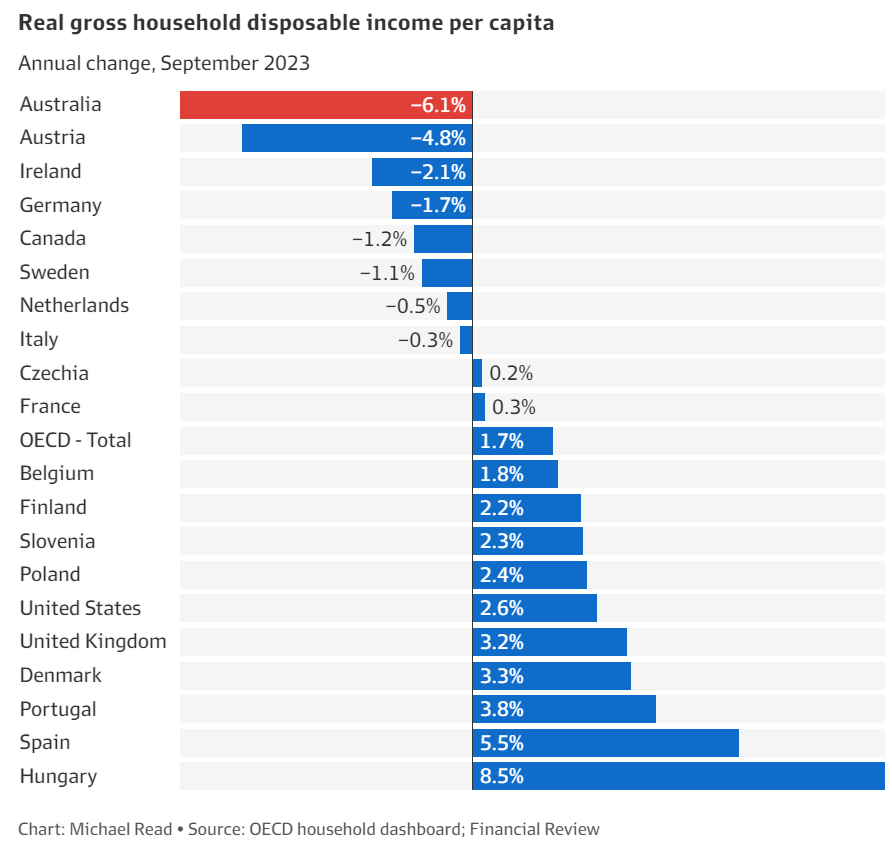
Read found that Australia’s was the worst. We had the biggest decline. Our 6.1% decline compared to a 1.7% gain across the OECD on average.
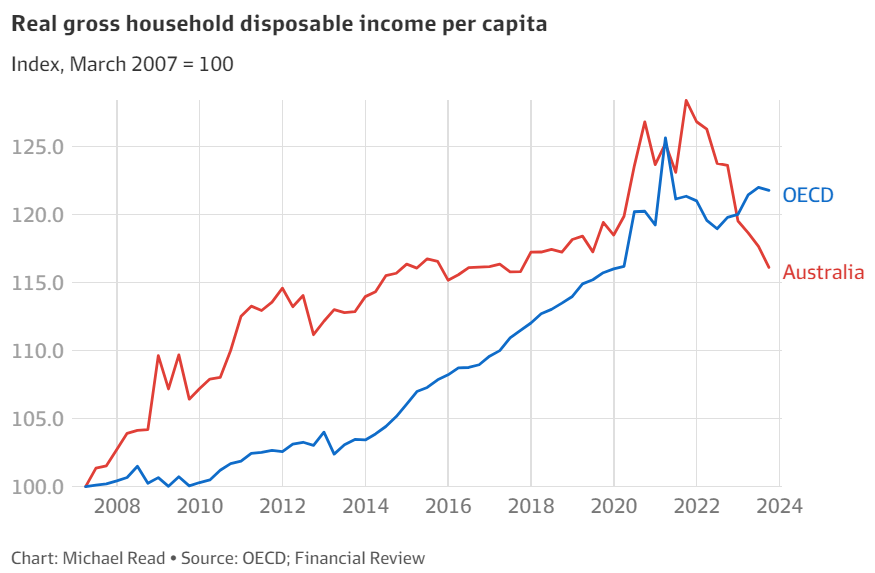
So basically, Australia has suffered the world’s biggest decline in living stands if you use that measure. And the scary thing about this is that economist Chris Richardson projects that Australia’s real household disposal income per capita by 2026 will only recover to just above 2015 levels.

That’s pretty somber when you think about it. It’s a lost decade for Australian living standards.
There are a few reasons for this. Number one is that Australia’s wages haven’t grown as quickly as in other nations. Our wages are growing slower than the US, UK and Euro zone for example.
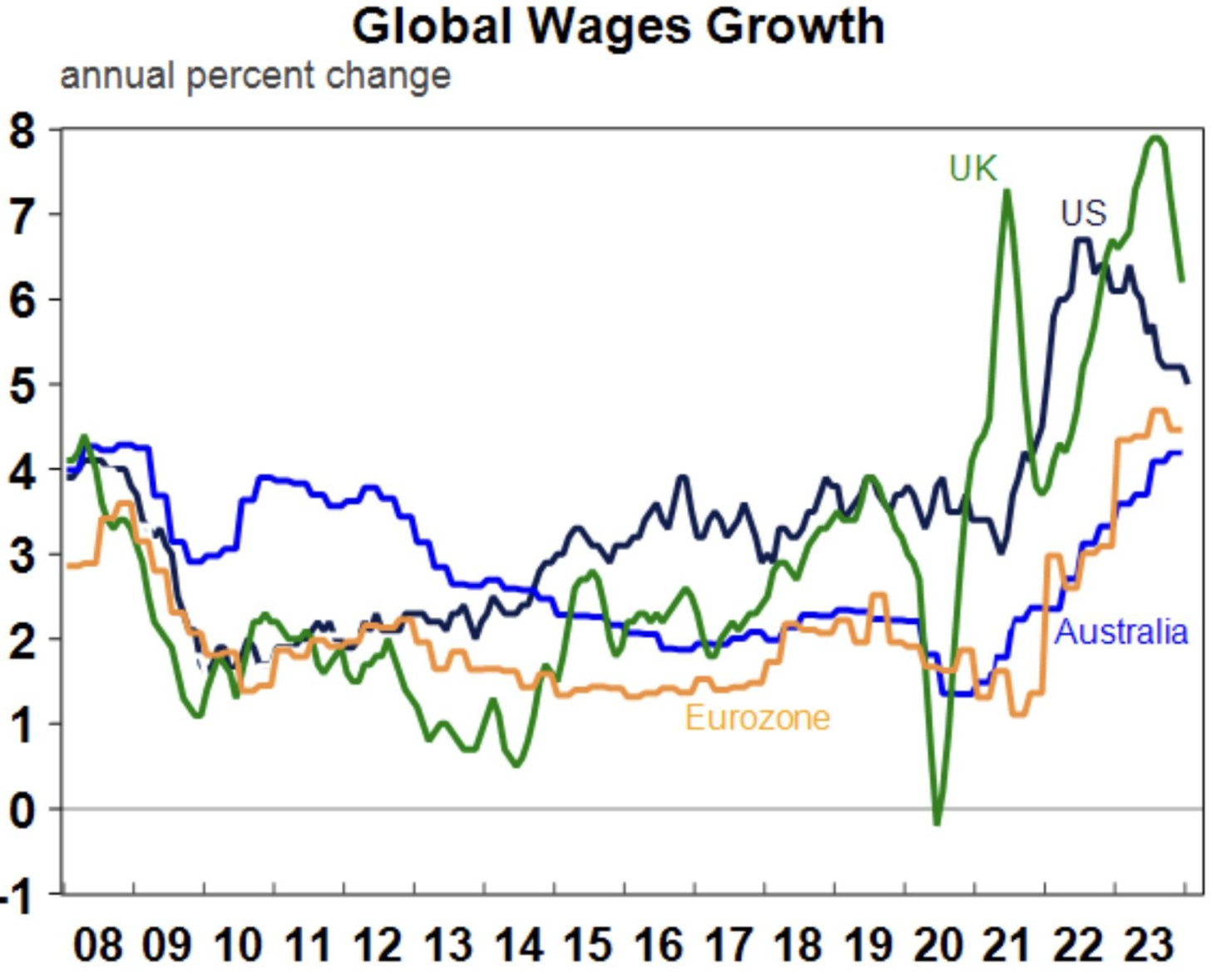
Source: AMP
The other reason is Australia has a dominance of variable rate mortgages. All central banks have lifted interest rates, as we know, but in Australia we’ve been hit relatively harder than everyone else because we’ve got so many people on variable rate mortgages.
So, Australia’s mortgage payments have gone up a lot quicker than elsewhere. That has also drained incomes.

We’ve also had this massive rise in bracket creep. In the year to September, overall income tax payments went up 22.5%, but overall wages up only 7.5%. So effectively, people have been pushed into higher tax brackets, which is draining their disposable income.
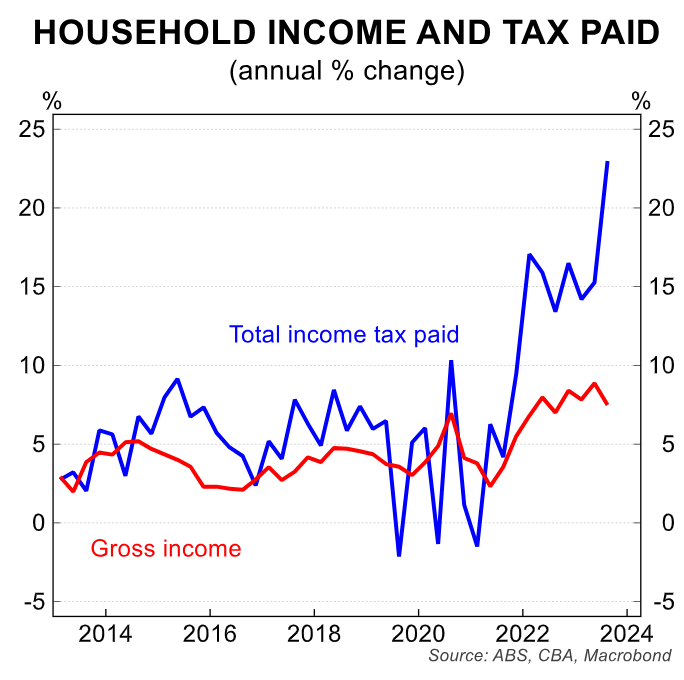
It’s basically a triple whammy. We’ve been smashed on a whole lot of angles and that’s why we suffered the world’s biggest collapse in real per capita household disposable income.
We’ve had three consecutive quarters of real per capita GDP decline and we’re about to have another one when the December quarter accounts come out early next month.

GDP is just one measure it’s not as good as the above, which actually measures the impact on households.
Real per capita household disposable income has been hit a lot harder than per capita GDP. But both are in decline…
Although Australian wages are growing slower than elsewhere in the world, at least we are seeing some positive real wage growth.
The December quarter wage price index was released by the ABS and that showed that wages went up 4.2% year-on-year against headline inflation of 4.1%. So, we got 0.1% growth.
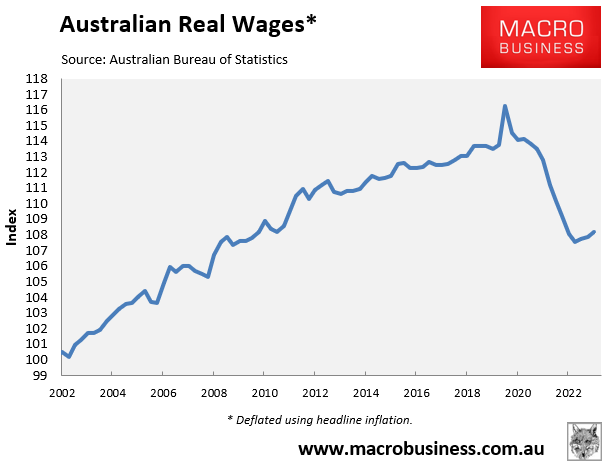
The problem with that is this doesn’t measure after taxes. So because we’ve had this high bracket creep and high rising income payments, real wages are still going backwards after tax.
Once you adjust for tax, it’s also worth pointing out that real wages are still 6.9% below their peak. And they’re tracking around 2010 levels.
So, we’re slowly crawling back. but we’re still so far behind.
The scary thing about this is that if you plug in the Reserve Bank’s projections for the economy – i.e. for inflation and wages – by 2026, Australian real wages are still going to be 3.5% below what they were before the pandemic started in 2019,
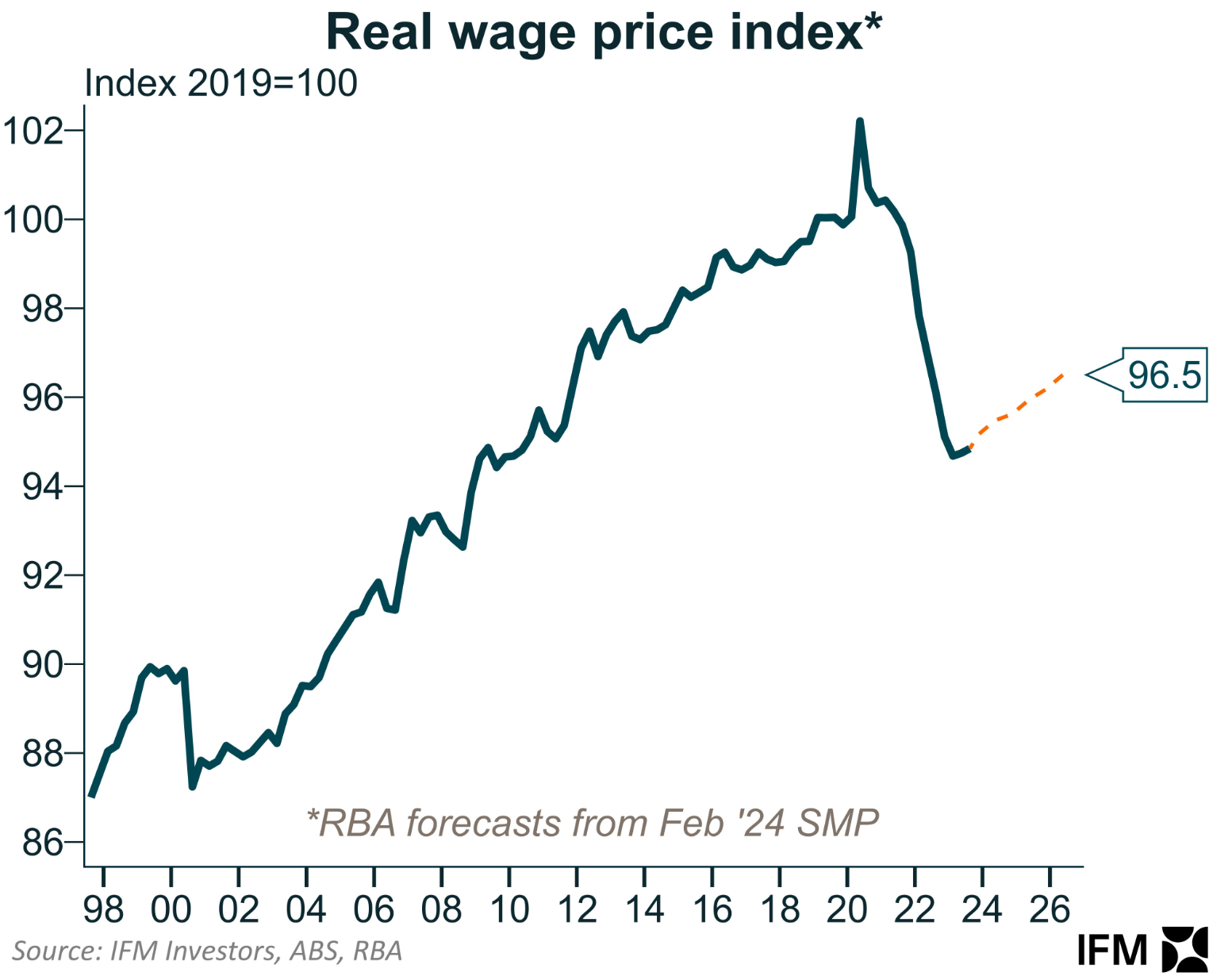
We’re getting some modest rebound in wages, but it’s still not enough, and we’re still going backwards once you adjust for taxes.
It is also worth pointing out that real wages are measured against CPI inflation. But the Australian Bureau of Statistics’ cost of living index for households went up 6.9% last year.

So for working households, once you adjust for their cost of living and also taxes, they are still going backwards at a pretty fast clip.

